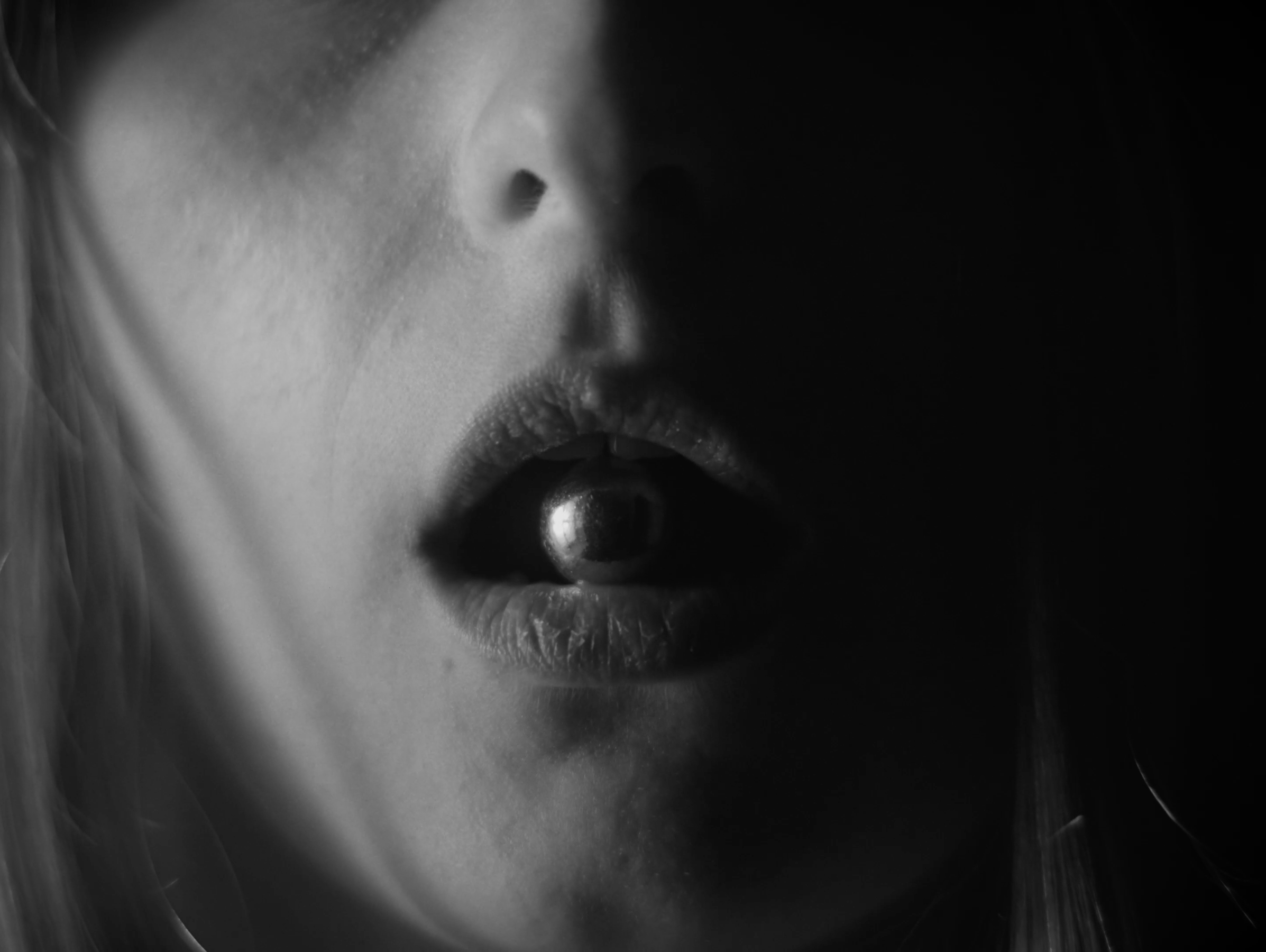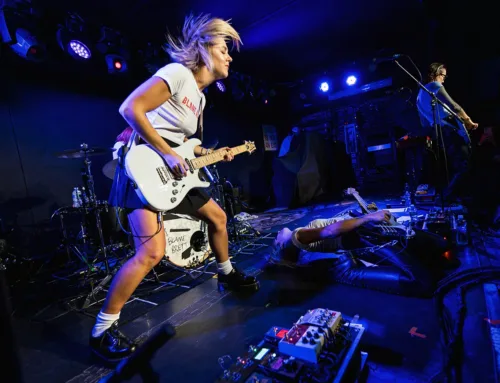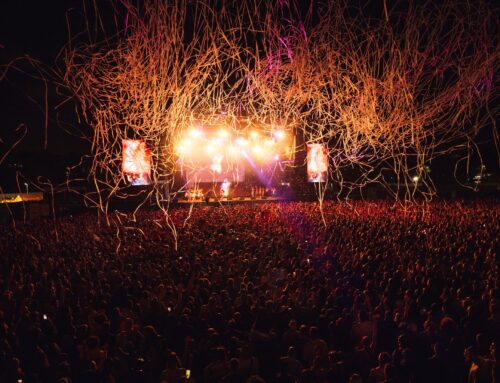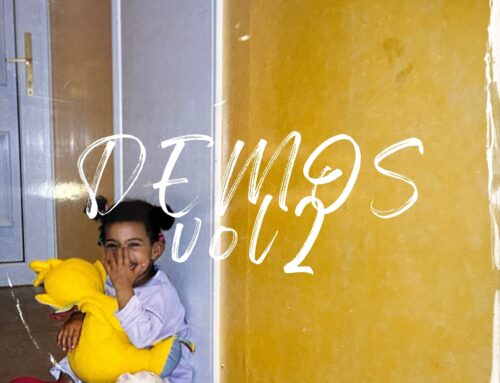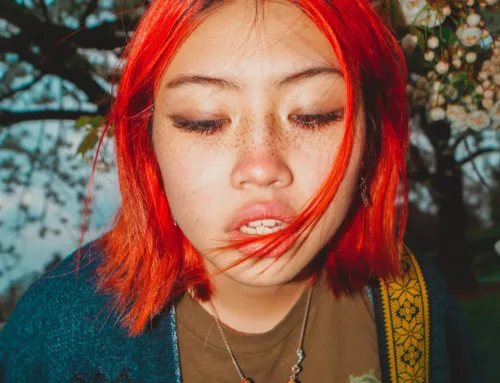Written by Sam Kohn
Hey Imogen, and welcome back to Haste Magazine! What have you been up to since Othering was released in 2020?
Hello and thank you for having me back! I’ve been working on a few different things since Othering – I made Mia’s World, have been involved in a couple of smaller projects and have also been curating films with ProjectOurs and Depot Cinelogue in Brighton! I’ve also been working on the proof-of-concept for my first feature script, Sacred Hearts. It’s been incredibly busy, but really there’s nothing else I’d rather be doing!
That all sounds great! So on to Mia’s World: The whole atmosphere of the film is very strange and dark. What sort of experience did you want to create?
The mood of Mia’s World was very much inspired by the illogic of nightmares, and the unexplained feelings of unease we can have towards certain everyday objects. As the title implies, the whole experience of Mia’s World is about bringing the viewer into this cryptic, unsettling world, their only guide being a small child who is unable to interpret her experience – and so the viewer is left to decode it for themselves. This has led to varied responses from audiences, with viewers often being left unsettled, without being completely sure what it all means.
Definitely. It’s clear that in contrast to your previous short, Othering (2020), Mia’s World is much more abstract. What prompted you to move into a more experimental style of filmmaking?
For me it was a natural progression, but I had to undo a lot of my learning to get it that way. At the time I had just finished my MA in Scriptwriting, in which I was basically trained to write to a formula with a clear narrative arc; it’s an essential and valuable skill to have as a writer/director, but very counterproductive if you’re trying to make an experimental film. I spent a good few months trying to shape Mia’s World into a three act, very story-driven script before it occurred to me: who am I doing this for? This isn’t the film I want to be making at all! So then I abandoned that script and followed my instincts.
In the initial stages of conceptualising Mia’s World, what were your main sources of inspiration, and how did they shape the film’s direction?
It sounds clichéd to say it, but it’s the truth: Mia’s World was inspired by a dream I had in 2015. I’d never been so affected by a dream before, and I remember waking up and grabbing my notebook in a semi-conscious daze to get it all down on the page because I knew right away that this was important. I think that’s basically why Mia’s World had to be this surreal thing; it was driven by an abstraction – it wasn’t supposed to be fully conscious.
I think at the back of my mind I always knew what this production was going to be: a recreation of that dreamspace. I believe that we all share a similar vocabulary in our dreams – which is why the works of Lynch, as intuitive and enigmatic as they are – resonate so deeply with a huge global audience. I think any of us can tap into that realm, but it involves abandoning everything you think you know about storytelling and adopting complete self-trust. Once I got over the pressure of Mia’s World needing to fit a certain mould, the process of making the film became a way of getting back to the dream; of re-entering it.
We understand the production on Mia’s World started all the way back in 2020. Can you give us an idea of the journey from concept to screen?
Well, after we were done developing the script, my producers and I then faced the hurdle of acquiring funding, which is my least favourite part of the filmmaking process. For Mia’s World we ran a Kickstarter campaign in 2021, in which we managed to reach our target thanks to all of our incredible backers who simply believed in the project. We also got shortlisted for BFI funding but they ultimately felt the film was too ambitious, maybe it was! Pre-production was a total nightmare if I’m being honest; an abnormal amount of things fell through, to the point where it almost felt like the universe didn’t want us to make this film. I was really torn about whether or not to even go ahead with the shoot, because at one point it felt like I was just fighting to get it made against ridiculous odds. I’m glad we followed though because filming was amazing; there was so much collaboration, positivity and teamwork on set – from how dark and unsettling the film itself is, you would never have guessed how much of a laugh we were having, and in spite of how rocky things had been, the entire three days on set went incredibly smoothly. Post-production was a long process, since so much of the film is in the editing and sound design, but I’m glad we took our time on it because I’m very pleased with how it turned out.
Can you discuss a particularly memorable day on set and what made it stand out?
I think my favourite day on set was the first! The energy from everyone was incredible; I felt so grateful to have the crew that I did, and it was a great bonding experience. At a point where I was beginning to question if filmmaking was really for me, the shoot just injected the joy back into the process. My mum actually did the catering, and I think as a result became the most popular person on set! I can’t stress enough how important it is to make sure everyone is happy and having a good time while filming – it can be gruelling otherwise.
What was your experience like entering the film into festivals, and how did you feel when Mia’s World was selected for screening at Brighton Cinecity?
After spending two years making Mia’s World, the festival process was pretty disheartening. We had maxed out our budget during post-production, so I self-funded our festival entries, but of those we initially entered we didn’t get into any. I felt like we’d cheated our Kickstarter backers somehow, by failing to deliver on the one thing that would lend this film its credibility and offer a sense of payoff, but that didn’t happen initially. In November 2023, however, we got shortlisted for Ravenna Nightmare Film Festival and selected for Brighton Cinecity. I’m so glad the film finally got a public screening, a bonus being that it was in Fabrica Gallery, a converted church, which added to the overall atmosphere. The reality is that Mia’s World is never going to be to most people’s taste – and I don’t think any of my work is. Does that mean my films aren’t good? Potentially. Is that going to stop me making them? Absolutely not.
Now that Mia’s World is completed, what can we expect to see next?
I recently released another film online which I shot earlier this year, called The Sinking, which you can watch here. And in February I’m gearing up to shoot Three of Swords, a proof of concept for my first feature script, Sacred Hearts!
Quickfire:
5 films to get to know you?
- The Green Ray (dir. Éric Rohmer, 1986)
- Meshes of the Afternoon (dir. Maya Deren, 1943)
- Rest Energy (dir. Marina Abramović & Ulay, 1980)
- Céline and Julie Go Boating (dir. Jacques Rivette, 1974)
- Paris, Texas (dir. Wim Wenders, 1984)
Best film you saw in 2023?
Outer Space (dir. Peter Tscherkassky, 1999) – utterly mesmerising.
Film you’re most excited for in 2024?
Jonathan Glazer’s The Zone of Interest.
What’s the key to a great short, as opposed to a feature-length film?
I think the test of a great short is the level of intrigue and immersion that it conjures in a 15-30 minute window, without giving too much of itself away. Features have more ebbs and flows and breathing space, but a short is more about the creation of a consistent tone and idea; it’s much more focused.
To watch Mia’s World, click the link below!

